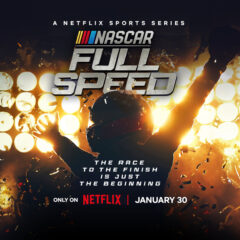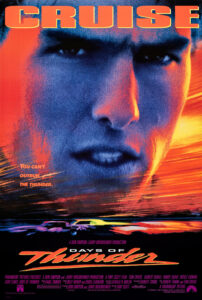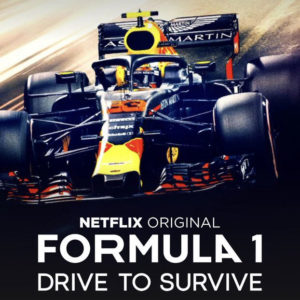
With NASCAR: Full Speed, Netflix is trying to capture F1: Drive to Survive’s success in open-wheeled racing with the tradition and pageantry of stock car racing. Does it succeed? That’s a tougher question to answer than I would like it to be.
The answer, however, is probably not.
The series focuses on the NASCAR playoffs, and as such, this series is a great recap for casual fans to remember who won the championship last year and all the storylines of the also rans and almosts. But this isn’t Drive to Survive. You’re not going to get full season storylines following each and every driver.
It is nice to follow the drivers and the stories that we do get and, on the whole, the show does a great job rebutting the cliche that these drivers are just country simpletons driving in circles. (Some of us knew that already, but it’s nice they show these drivers as more than just drivers.)
Two of the stories of this year’s playoff drivers probably excited the producers of this show to no end. Denny Hamlin as both a driver and an owner of other cars in the playoff was one such story, and the other gets up close with William Byron who came up through iRacing to the biggest stockcar stage, as opposed to growing up on the dirt tracks. But there are more stories out there that were not told. Will they get a chance to tell them? I don’t know.
But watching the five episodes feels not just truncated but almost one-offish. Unlike the Drive to Survive series, where it was unique and novel to get such access throughout the entire season, Full Speed feels like a test balloon. It’s a green flag show for NASCAR fans that never quite rises to earn the blue flag to pass Drive to Survive.
 As someone who lives in the States and only casually watches the biggest NASCAR races like Daytona and Talladega, I know these guys are accessible, and that if I wanted to have the access to them, I could. I know it exists, but I choose not to endeavor forward with that. It does unfortunately take the novelty of the access of this show down a bit.
As someone who lives in the States and only casually watches the biggest NASCAR races like Daytona and Talladega, I know these guys are accessible, and that if I wanted to have the access to them, I could. I know it exists, but I choose not to endeavor forward with that. It does unfortunately take the novelty of the access of this show down a bit.
I do think that the show is shot well, though. It’s like Days of Thunder with more talking heads, but I don’t know how compelling this show is going to be when compared to Drive to Survive. And that’s the thing, you can’t ignore the mammoth success that Drive to Survive was as a ratings or numbers darling for not only Netflix, but for growing Formula One in the United States.
In fact, as Full Speed aired, Netflix was promoting the sixth season of Drive to Survive.After the first few seasons, the show became fully self-referential about how the series grew the sport in the US.
Given that fact, the comparisons are going to be unavoidable, but I don’t know that the success will be the same. Drive to Survive follows the entire field of drivers. Even the least interested person watching it has someone they might relate to. Full Speed doesn’t have those numbers going for it, and it will probably be hurt by that.
Then again, what can you do with only five episodes? Drive to Survive gets double that to cover 24 races plus the testing of 10 teams and 20 drivers. Heck, in episode two when sitting down for his talking head interview, Bubba Wallace refers to it out loud as having his Drive to Survive moment. Drive to Survive is such an anomaly that I don’t know how any of the other shows can compare, especially when it’s also racing.
 The other thing that the lack of episodes does is that it minimizes the storylines that can exist within each race. Drive to Survive manages to capture some of that throughout the series and throughout each race from the top to the bottom of the field of drivers. Full Speed only covers this briefly and only during the last championship race. This feels like a missed opportunity due to the lower number of episodes.
The other thing that the lack of episodes does is that it minimizes the storylines that can exist within each race. Drive to Survive manages to capture some of that throughout the series and throughout each race from the top to the bottom of the field of drivers. Full Speed only covers this briefly and only during the last championship race. This feels like a missed opportunity due to the lower number of episodes.
The one thing that I do admit is brilliant as an existing fan of some of these sports is that these series are a great recap of the previous year. It’s almost like getting a reality TV version of the previous season recap of Stranger Things. Full Speed debuted January 30, 2024, a few weeks before the NASCAR season starts up at Daytona. Similarly, the Tour de France series Unchained debuted in late June for the July race start, Six Nations: Full Contact released a few weeks before the start of that tournament, and so on.
As marketing for existing fans, all of these shows provide a great recap. Are they effective in building the brands and awareness of these sports, leagues, tournaments, and races? Only time will tell.